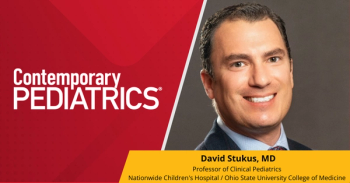
- Consultant for Pediatricians Vol 9 No 12
- Volume 9
- Issue 12
Lessons From Colby
Like many physicians, I find it difficult to care for a patient with a terminal disease-a discomfort heightened when the patient is an ebullient, beautiful child.
Like many physicians, I find it difficult to care for a patient with a terminal disease-a discomfort heightened when the patient is an ebullient, beautiful child. I first saw Colby at age 9 months, when she was referred to me for genetic consultation. She had chronic pulmonary disease and growth delay, which her pediatrician and subspecialists suspected were indicators of genetic disease. The finding of subtle vertebral/metacarpal processes by radiological survey and a nondiagnostic elevation of urinary oligosaccharide levels suggested a diagnosis of skeletal dysplasia with mucopolyoligosaccharide storage. However, when I saw Colby at age 22 months, serum lysosomal enzyme activities were normal, and I could not make a specific diagnosis. At that time, she had chronic respiratory distress with progressive pulmonary and aortic valve stenosis. She died 4 months later of arrest and hypoxia during postoperative care for myringotomy tube placement.
The progression and complexity of Colby’s illness forced a level of communication among her caregivers that went beyond the norm. "Keeping up with her evolving medical issues and input from her various pediatric consultants was difficult," admitted Dr David Granger, Colby’s primary pediatrician. Still he said, "Her parents were very organized, using a loose-leaf notebook to keep a record of all her appointments and consultation summaries. On several occasions we scheduled time to sit down and ‘compare notes.’ By updating each other, we were able to develop a better understanding of the questions we needed to ask. We maintained close contact during Colby’s terminal ICU course. This resulted in one final hospital visit, allowing mutual support through our grieving process." Primary physicians who can blend their relationship with the family and the input from subspecialists into a medical home foundation can greatly aid the resolution of incurable disease.
For my part, I could offer the family very little about Colby’s condition. Her insidious course and facial changes reminded me of those of a prior patient with geleophysic dwarfism. With no diagnostic tests for this rare, ill-defined disorder, the only information I could provide was the possibility of autosomal recessive inheritance, with a 25% recurrence risk in future pregnancies. Colby’s parents, with their understanding attitude, fostered my continued involvement in her terminal care, whereas otherwise I might have withdrawn. At her memorial service, I saw the overflowing support of their church congregation and pastor, their redemptive balloon release. My initial feelings of discomfort resolved with her father’s words:
Colby at age 1 ½ years.
"Colby’s condition was tragic, but not without some blessings. One of which was that I have known for a while that our time with her might be short. . . . When you are in the position of having a limited number of days with someone you love, the hugs last a little longer and the kisses are more frequent. When you are in that position you take more photographs . . . patience comes easier and the humorous side of life is more apparent. When you are in that position, you take more time to smell the flowers . . . playing just a little bit more together is an easily granted request . . . life is richer and the memories are so much sweeter. When you are in that position, the I Love You’s are said much, much more. Colby’s lesson to you is that you are in that position. My hope for you is that you realize it . . . and can make the most of every precious day with your loved one."
I was reminded of a seeming paradox-that care of chronic disease can lead to rewards more valuable than our brief triumphs over infection or allergy. Even in the worst of circumstances, such as the death of child, it is always possible to heal.
Acknowledgment:
I would like to acknowledge the generous contributions of David P. Granger, MD, head practitioner at Lake Ray Hubbard Pediatrics, PA, in Rowlett, Tex, and Colby’s parents. Without them, this tribute could not have been written.
Articles in this issue
almost 15 years ago
Positional Plagiocephaly, Part 1:A Practical Guide to Evaluationalmost 15 years ago
A Collage of Genital Lesions, Part 5almost 15 years ago
Green Teeth in a Child With Hyperbilirubinemiaalmost 15 years ago
Transient Neonatal Pustular Melanosisalmost 15 years ago
Nail-Patella Syndromealmost 15 years ago
5-Year-Old Boy With Acute Illness and Chest Painalmost 15 years ago
Teen With Progressive Depigmented PatchesNewsletter
Access practical, evidence-based guidance to support better care for our youngest patients. Join our email list for the latest clinical updates.














